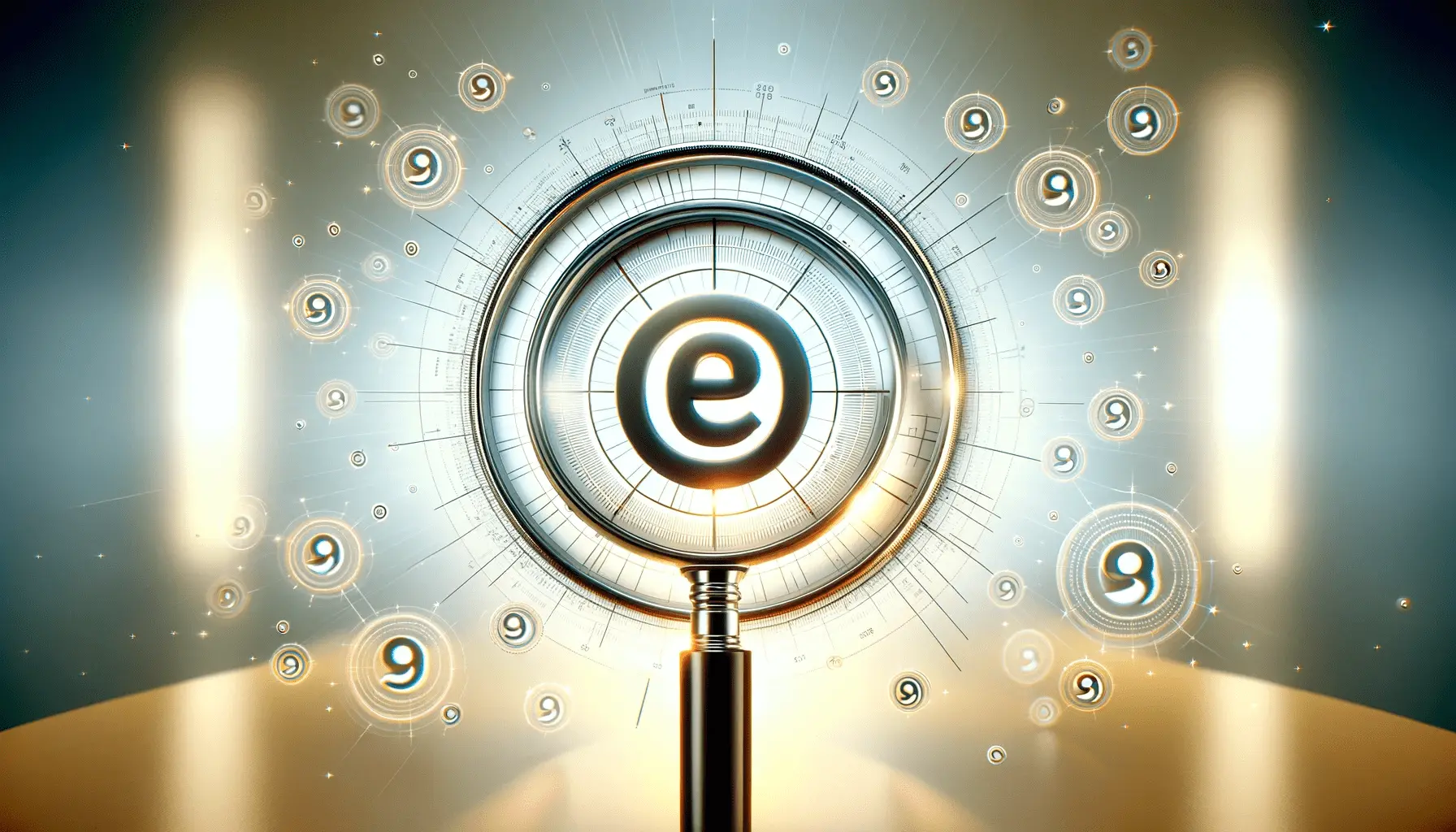Creating emotionally-charged headlines is not just an art; it’s a strategic element of SEO for blogging that can significantly impact the visibility and engagement of your content.
In the digital age, where information overload is a real challenge, capturing the attention of your audience through the emotional appeal of your headlines can be the difference between a hit and a miss.
This approach leverages the psychological aspects of human curiosity and emotion, driving clicks and shares, which are vital metrics for SEO success.
Understanding the psychology behind emotionally-charged headlines is crucial.
These headlines tap into the readers’ feelings, making them more likely to engage with the content.
Whether it’s joy, surprise, fear, or anger, an emotional trigger can make your headline stand out in a sea of informational noise.
This strategy is not about manipulation but about creating a genuine connection with your audience, offering them content that resonates on a deeper level.
- Impact of Emotion in Headlines
- Key Emotions to Target in Headlines
- Optimizing Emotional Headlines for SEO
- Measuring the Effectiveness of Emotional Headlines
- Emotional Headlines Across Different Platforms
- Common Mistakes to Avoid with Emotional Headlines
- Future Trends in Emotional Headlines
- Conclusion: The Power of Emotionally-Charged Headlines in SEO
- FAQs on Emotionally-Charged Headlines
Impact of Emotion in Headlines
The Psychology Behind Emotional Engagement
Emotions play a pivotal role in decision-making processes.
When users browse through content, they are more inclined to click on headlines that evoke a strong emotional response.
This is because emotional headlines create a sense of urgency or curiosity, compelling the reader to discover more.
By tapping into specific emotions, bloggers can significantly increase their content’s click-through rates, enhancing their SEO performance through improved engagement metrics.
Moreover, emotionally-charged headlines contribute to the shareability of content.
Articles with emotionally resonant headlines are more likely to be shared across social media platforms, increasing their reach and visibility.
This viral potential is a key factor in amplifying the impact of your content, driving both direct traffic and improving search engine rankings through social signals.
Strategies for Crafting Emotionally-Charged Headlines
To craft an emotionally-charged headline, start by identifying the core emotion you want to evoke.
Whether it’s inspiring awe, sparking curiosity, or inciting fear, the chosen emotion should align with the content’s message and your audience’s interests.
Utilizing powerful adjectives and verbs can amplify the emotional impact, making the headline more compelling and clickable.
It’s also essential to maintain authenticity and relevance in your headlines.
Misleading headlines that promise an emotional journey unrelated to the content can lead to disappointment and increase bounce rates, negatively affecting your SEO efforts.
Therefore, the emotional trigger should accurately reflect the article’s value, encouraging genuine engagement and interaction.
Emotionally-charged headlines are not just about attracting attention; they’re about creating a meaningful connection with your audience, encouraging engagement, and enhancing your SEO strategy.
Key Emotions to Target in Headlines
Identifying the right emotion to target in your headlines is crucial for engaging your audience effectively.
Different emotions can trigger various responses, influencing how readers interact with your content.
Here are some key emotions to consider and how they can be leveraged to enhance your SEO for blogging:
Curiosity
Curiosity drives readers to seek answers and information, making it a powerful tool for increasing click-through rates.
To evoke curiosity:
- Use questions that prompt readers to seek the answers within your content.
- Employ phrases that tease information without giving everything away.
Amazement
Content that amazes or surprises the audience tends to get shared more frequently, expanding its reach.
To create amazement:
- Highlight unusual facts or statistics that challenge common beliefs.
- Share groundbreaking news or discoveries relevant to your niche.
Fear
Fear can be a motivator for readers to learn how to avoid negative outcomes.
However, it’s important to use fear responsibly and not to alarm unnecessarily.
To incorporate fear:
- Discuss common concerns or dangers in your industry, offering solutions.
- Use strong action verbs that convey urgency or potential loss.
Joy
Positive emotions like joy or happiness encourage sharing and can foster a loyal community.
To spread joy:
- Share success stories or positive outcomes related to your topic.
- Use uplifting language that promotes optimism and well-being.
Trust
Building trust through your headlines can establish credibility and authority, leading to higher engagement rates.
To build trust:
- Use clear and straightforward language that sets realistic expectations.
- Include testimonials or endorsements in your headlines when relevant.
Choosing the right emotion to target in your headlines can significantly affect your content’s performance. Consider your audience’s preferences and the message of your article to select the most effective emotional trigger.
Optimizing Emotional Headlines for SEO
While emotionally-charged headlines are crucial for attracting readers, optimizing these headlines for search engines is equally important.
SEO for blogging involves a delicate balance between appealing to human emotions and satisfying search engine algorithms.
Here are strategies to ensure your emotional headlines also boost your SEO performance:
Firstly, incorporate relevant keywords naturally into your headlines.
Keywords signal to search engines what your content is about, helping to match it with the right audience.
However, stuffing your headline with keywords can detract from its emotional impact.
Instead, choose one or two primary keywords that blend seamlessly with the emotional trigger you’re aiming for.
Incorporating Semantic Keywords
Alongside your main keywords, include semantic keywords related to the emotion you’re targeting.
Semantic keywords are variations or related terms that help search engines understand the context of your content.
For example, if your main keyword is “inspiring stories,” semantic keywords could include “motivational tales” or “uplifting narratives.” This not only helps with SEO but also ensures your headline resonates with readers looking for that emotional connection.
Using Emotional Modifiers
Emotional modifiers are adjectives or adverbs that amplify the emotional tone of your headline.
Words like “astonishing,” “heartbreaking,” or “joyful” can make your headline more appealing to both readers and search engines.
These modifiers can enhance the emotional appeal of your headline while also incorporating additional keywords that improve your content’s searchability.
Headline Length and Clarity
The length of your headline also plays a role in SEO.
Ideally, your headline should be between 50 to 60 characters to ensure it displays fully in search results.
Moreover, clarity is crucial.
A clear, concise headline with a strong emotional appeal is more likely to be clicked on than one that is vague or overly complex.
Ensure your headline accurately reflects the content of your article, as misleading headlines can lead to high bounce rates, negatively affecting your SEO.
- Balance emotional appeal with keyword optimization.
- Incorporate semantic keywords for context.
- Use emotional modifiers to enhance appeal.
- Keep headlines clear and within optimal length for search engines.
SEO for blogging is not just about ranking high in search results but also about connecting with your audience on an emotional level. By optimizing your emotionally-charged headlines for SEO, you can achieve both objectives, driving traffic and engagement.
Measuring the Effectiveness of Emotional Headlines
To truly understand the impact of your emotionally-charged headlines on SEO and audience engagement, it’s essential to measure their effectiveness.
This involves analyzing various metrics that can provide insights into how well your headlines are resonating with readers and search engines alike.
Here are key metrics and tools you can use to gauge the success of your emotional headlines:
Click-Through Rate (CTR) is a critical metric for assessing headline effectiveness.
A high CTR indicates that your headline is compelling enough to encourage readers to click and read further.
Tools like Google Analytics can help track the CTR of your articles, providing a clear picture of which headlines are capturing attention.
Engagement Metrics
Beyond clicks, engagement metrics such as time on page, bounce rate, and social shares offer deeper insights into how readers interact with your content.
High engagement levels suggest that your emotional headlines not only attract readers but also keep them interested in your content.
Analyzing these metrics can help you refine your headline strategy to foster stronger connections with your audience.
A/B Testing for Headlines
A/B testing is a powerful method for comparing the performance of different headlines for the same content.
By presenting two variations of a headline to your audience, you can directly measure which one generates more clicks and engagement.
This empirical approach allows you to fine-tune your headlines based on real-world data, optimizing their emotional appeal and SEO impact.
Feedback and Comments can also serve as qualitative measures of your headlines’ effectiveness.
Pay attention to reader comments on your articles and social media posts.
Positive feedback or questions inspired by the headline can indicate strong emotional engagement, while negative comments may suggest a need for adjustment.
- Track Click-Through Rates to assess initial appeal.
- Analyze Engagement Metrics for deeper insights into reader interaction.
- Conduct A/B Testing to optimize headline effectiveness.
- Monitor Feedback and Comments for qualitative insights.
Effective emotional headlines not only draw readers in but also encourage them to engage deeply with your content. By measuring these headlines’ performance, you can continuously improve your approach, striking the perfect balance between emotional resonance and SEO optimization.
Emotional Headlines Across Different Platforms
The digital landscape is vast, encompassing various platforms where content can be shared and discovered.
Each platform has its unique audience and content consumption habits, necessitating a tailored approach to emotional headlines.
Understanding how to adapt your emotionally-charged headlines for different platforms can amplify their impact, driving engagement and SEO benefits across the board.
For instance, social media platforms like Facebook and Twitter are ripe for emotional headlines that provoke curiosity or amazement, encouraging shares and discussions.
Meanwhile, professional networks like LinkedIn may respond better to headlines that inspire trust or achievement, resonating with career-oriented users.
Adapting your headlines to fit the platform’s context and audience preferences is key to maximizing their effectiveness.
Blog Posts and Articles
In the realm of blogs and articles, headlines that combine emotional triggers with informative or actionable insights tend to perform well.
These platforms allow for longer, more detailed content, so headlines that promise value and evoke interest can significantly boost readership and SEO rankings.
Incorporating keywords naturally while focusing on the emotional angle can make your content more discoverable and engaging.
Email Marketing
Email inboxes are often crowded, making it crucial for your headlines (or subject lines) to stand out.
Emotional headlines that create a sense of urgency or exclusivity can increase open rates.
Personalization, such as including the recipient’s name or referencing past interactions, can enhance the emotional impact, making the email feel more relevant and compelling.
Advertising Copy
In advertising, whether it’s PPC campaigns or social media ads, the headline is often the first and only chance to grab attention.
Emotional headlines that tap into desires, fears, or curiosity can significantly improve click-through rates.
Testing different emotional triggers can help identify what resonates best with your target audience, optimizing your ad performance and ROI.
- Adapt headlines to the platform’s audience and content style.
- For blogs and articles, combine emotional triggers with informative insights.
- In email marketing, use urgency and personalization to boost open rates.
- For advertising copy, test various emotional triggers to optimize click-through rates.
The effectiveness of emotional headlines extends beyond just your website or blog. By tailoring these headlines to suit the nuances of each platform, you can enhance your content’s reach, engagement, and SEO impact, creating a cohesive and compelling online presence.
Common Mistakes to Avoid with Emotional Headlines
While emotional headlines can significantly enhance the appeal and effectiveness of your content, certain pitfalls can undermine their impact.
Being aware of these common mistakes can help you craft headlines that are not only emotionally engaging but also respectful and effective.
Avoiding these errors is crucial for maintaining the integrity of your content and fostering a positive relationship with your audience.
One of the most critical mistakes is creating misleading or clickbait headlines.
These headlines promise more than the content delivers, leading to reader frustration and increased bounce rates, which can harm your SEO efforts.
Ensuring your headlines accurately reflect the content is essential for building trust with your audience.
Overusing Emotional Triggers
Another mistake is the overuse of emotional triggers, which can desensitize your audience over time.
If every headline screams urgency or shock, readers may become skeptical of the content’s value.
Striking a balance and using emotional triggers judiciously can maintain their effectiveness and keep your audience engaged.
Ignoring Audience Preferences
Not considering your audience’s preferences and sensitivities can also lead to ineffective headlines.
What works for one demographic may not resonate with another.
Understanding your audience’s emotional drivers and tailoring your headlines accordingly is key to connecting with them on a meaningful level.
Lack of Testing and Optimization
Failing to test and optimize your headlines is a missed opportunity for improvement.
A/B testing different emotional triggers and headline formats can reveal valuable insights into what resonates with your audience, allowing you to refine your strategy for better engagement and SEO results.
- Avoid misleading or clickbait headlines that promise more than the content delivers.
- Use emotional triggers judiciously to avoid desensitizing your audience.
- Consider your audience’s preferences and sensitivities when crafting headlines.
- Embrace testing and optimization to refine your headlines for maximum impact.
Neglecting the nuances of emotional headline creation can lead to disengagement and distrust among your audience. By avoiding these common mistakes, you can ensure your headlines effectively capture attention and drive meaningful interactions.
Future Trends in Emotional Headlines
The landscape of content creation and consumption is continuously evolving, influenced by technological advancements, changing user behaviors, and the ever-competitive nature of digital marketing.
As we look to the future, several trends are likely to shape the way we craft and respond to emotional headlines.
Staying ahead of these trends can help content creators and marketers maintain the effectiveness of their emotional engagement strategies.
Artificial Intelligence (AI) and machine learning are becoming increasingly sophisticated, offering new tools for analyzing and predicting the emotional impact of headlines.
AI can help identify patterns in successful headlines, suggesting optimizations for future content.
This technology can also personalize headlines for individual users, enhancing their relevance and emotional appeal.
Increased Focus on Authenticity
As audiences become more discerning, the demand for authenticity in content, including headlines, is rising.
Future emotional headlines will likely emphasize genuine, relatable emotions over sensationalism.
This shift aims to foster deeper connections with audiences by resonating with their real experiences and values.
Integration with Visual and Interactive Elements
With the growing importance of multimedia content, emotional headlines may increasingly be paired with visual or interactive elements to amplify their impact.
Videos, images, and interactive features can complement the emotional trigger of a headline, making the content more engaging and memorable.
Emphasis on Emotional Intelligence
Emotional intelligence in headline creation will become more critical as content creators strive to navigate the fine line between evoking strong emotions and respecting audience sensitivities.
Understanding and empathizing with the audience’s emotional state will guide the crafting of headlines that are both impactful and respectful.
- Leverage AI and machine learning to optimize the emotional impact of headlines.
- Focus on authenticity to foster deeper connections with audiences.
- Pair emotional headlines with visual or interactive elements for enhanced engagement.
- Apply emotional intelligence to create headlines that resonate without alienating.
The future of emotional headlines lies in the balance between technological innovation and the timeless human need for genuine connection. By embracing these trends, content creators can continue to engage audiences effectively, navigating the evolving digital landscape with empathy and insight.
Conclusion: The Power of Emotionally-Charged Headlines in SEO
Throughout this exploration of emotionally-charged headlines for SEO, we’ve uncovered the intricate balance between evoking genuine emotional responses and optimizing for search engines.
The art of crafting headlines that resonate on a personal level with readers, while also appealing to the algorithms that dictate online visibility, is a nuanced skill that can significantly amplify the reach and impact of your content.
Key Takeaways
Emotionally-charged headlines serve as the bridge connecting the heart of your content with the interests and needs of your audience.
They not only enhance click-through rates and engagement but also foster a sense of community and loyalty among readers.
The strategies discussed, from understanding the psychology behind emotional engagement to adapting headlines for different platforms, provide a comprehensive guide for leveraging emotion in your SEO efforts.
Looking Ahead
The future of emotional headlines is poised for exciting developments, driven by advancements in AI, a growing emphasis on authenticity, and the integration of multimedia elements.
As we move forward, the ability to craft headlines that are both emotionally compelling and SEO-friendly will remain a critical component of successful digital marketing strategies.
- Embrace AI and machine learning for headline optimization.
- Focus on authenticity to create genuine connections.
- Incorporate visual and interactive elements to enhance emotional appeal.
- Apply emotional intelligence to respect and resonate with your audience.
In conclusion, emotionally-charged headlines for SEO represent a powerful tool in the digital marketer’s arsenal.
By understanding and applying the principles outlined in this article, you can create headlines that not only capture attention but also connect with readers on a deeper level, driving both engagement and SEO success.
As the digital landscape evolves, staying attuned to the emotional pulse of your audience will ensure that your content continues to thrive in the competitive world of online search.
Want your website to top Google search rankings? Leave the SEO to our professional agency!
FAQs on Emotionally-Charged Headlines
Explore common questions about leveraging emotionally-charged headlines for SEO and content engagement.
An emotionally charged headline evokes strong feelings, prompting readers to click and engage with the content.
Emotions trigger curiosity or concern, making readers more likely to explore the content behind the headline.
Yes, by increasing engagement and shares, emotional headlines can positively impact SEO rankings.
No, they can evoke a range of emotions, including joy, curiosity, fear, or urgency, depending on the content’s goal.
Ensure the emotion in the headline accurately reflects the content, maintaining trust with your audience.
AI can analyze successful headlines, offering insights to optimize emotional impact and reader engagement.
Crucial. A/B testing headlines can reveal which emotional triggers are most effective for your audience.
Yes, but they should be tailored to fit the specific audience and content consumption habits of each platform.











